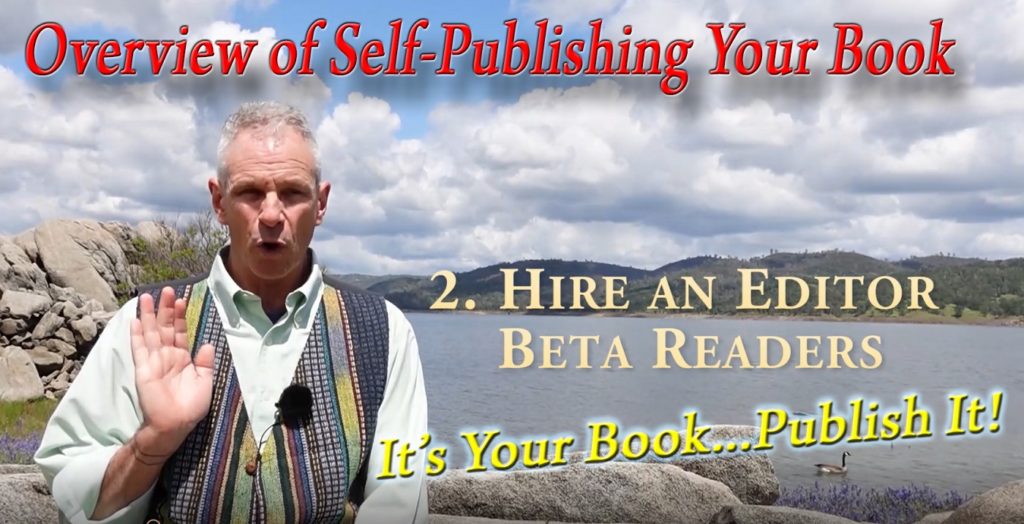After I self-published my fourth book, I can confidently say anyone can self-publish a book they have written. I am not saying it is easy or simple. I am saying that if you have been gripped with the concept of writing a book, then you can self-publish it and get it into the hands, or mobile devices, for people to read.

Overview of Self-Publishing Your Book
For a book author, it is the ideal scenario if a publisher wants to print your book, distribute it to book stores, and handle the marketing for the book. After you have written your book, you should certainly submit it to publishers to see if they are interested. Just because a publisher declines to accept your book for publication does not mean the book is not worthy to be printed. In fact, your book may absolutely be more important than some of the books written by famous authors.
Self-published books can target a specific niche of the book consuming market. These are books that appeal to a small population of readers, regardless of whether the book is fiction or non-fiction. It is doubtful that any book publisher would want to print a book on one person’s journey to refurbish their ’57 Chevy. Certainly, there are hundreds, if not thousands of people, who would find the book fascinating.

Consequently, just write the book and self-publish it. Here is an overview in the self-publishing process.
Write the Book
First, the most time-consuming aspect is writing and compiling the book, obviously. Even if your book is mostly images and photographs; there will still be a considerable amount of time spent on developing each page. I have found the formatting of lists and tables, such as real estate transactions, to be very challenging.
If you are compelled and interested in writing a book, I don’t need to emphasize how important it is to have good content. You will write and compile your book to the best of your ability. It is no sin to be a perfectionist. However, there is cost-benefit equation that you need to consider. For example, if it takes 10 hours to write a sentence or verify a source of information, and the reference in question is not consequential to the overall work, perhaps it is best work around it.
Because I’m barely a composer of coherent sentences, I will not attempt to give my opinion on what makes a readable book. Just writing a good caption for a photograph can be a challenge. Writing takes practice. For every painting hanging in an art gallery, there are hundreds of sketches and paintings the artist created while working toward the final image that you don’t see. For aspiring authors, you may want to find a trusted friend or beta reader to give you constructive criticism.
Hire an Editor
Second, you need to find a good editor. While self-publishing a book is rather low-cost, your book will be greatly improved by hiring a good editor. Outside of my time spent researching and writing, the cost of hiring an editor to fix all of my punctuation and grammar errors is the most expensive part of the books. The cost of editing could be your stop sign for the book. You’ll have to be the judge of how important potential writing issues will be to your reader and distribution for the book. I have bought books that are just a mess of poorly written sentences. However, the books in question did have some good material and reference that I found of value.
Format of the Book
Third, you have to decide on the format of the book if you want a paperback version. My simple suggestion is to find a book you like for the content you are producing and copying the size and format. For my first book, because it had lots of pictures, I went with 8.5 x 11-inch format. I also went with 12-point font in a two-column style. This is your book, format it the way you would like it to be read. Some of the self-publishing websites offer pre-formatted applications. The downside is they have limited flexibility if your adding different images, tables, footnotes, or index. For my books, I usually end up in a wrestling match with Microsoft Word trying to get something to format correctly.
Word Processor
Fourth, you will need to use and become intimately familiar with a word processing software program to write and compile the book. Here is where you do need to review the different self-publishing platforms like Kindle Direct Publishing, Apple, Draft2Digital, and Smashwords. They each have their own specifications for uploading books and they can be different for e-books, paperback, or hard cover. If you can determine which platform you will use in advance, you can tailor your initial formatting for that self-publishing software.
Details and Numbers
Fifth, you will want to apply for the ISBN (International Standard Book Number) and Library of Congress numbers. Some of the self-publishing websites will offer you the ISBN, which has an associated bar code for scanning the price at retail stores. The Library of Congress control number helps establish copywrite protection. You may also need to request permission to use certain images in your book to avoid copywrite infringements.
Cover Design
Sixth, design your book cover. I have paid to have covers created. I have also designed my own covers. (Can you determine which book covers above I created and which were professionally created?) Even if you hire someone to develop the book cover, you’ll still want to create a preliminary design. There are simple programs like Microsoft Paint that can help you create template to help guide your cover designer. If you can get proficient with a more advanced image software like Adobe Photoshop, you can create your own cover.
Marketing
Seventh, marketing the book, which can be difficult. The marketing of a book is a whole discipline in itself, much like the graphic artist creating a book cover. A website to promote the book can be instrumental in alerting people to its publication, along with social media. I sell most of my books, which obviously are not many, when I speak to different local groups.
Distribution
Eighth, distributing the book. Most of the large bookstores don’t handle self-published books. There may be local bookstores or museums that will stock your book. I do have an online ordering system for one of my books, but I’m not really interested in being a bookstore. The on-demand e-book and paperback is really the easiest way to distribute your book. I order 20 books to keep at home to take with me when I speak. The rest of the sales are handled by the online publisher who will print and ship just one paperback book to a buyer.
More than an author when you self-publish
The problem with self-publishing a book is that you need to be a writer, artist, editor, manager, administrative assistant, computer geek, and marketer. The reward or treasure is having your work in print or electronic form to help educate, inform, and entertain innumerable readers. From my perspective, the benefits are greater than the costs.
Finally, if your motive for self-publishing is to get rich, you are better off trading in crypto-currencies. I don’t write to make money. I research, write, and publish to stay sane. I believe I have information that should be put in a book format to inform people and document history for future generations. My little inconsequential books will be stuffed in a closet and forgotten, until someone opens the door in the future and picks up the book.


